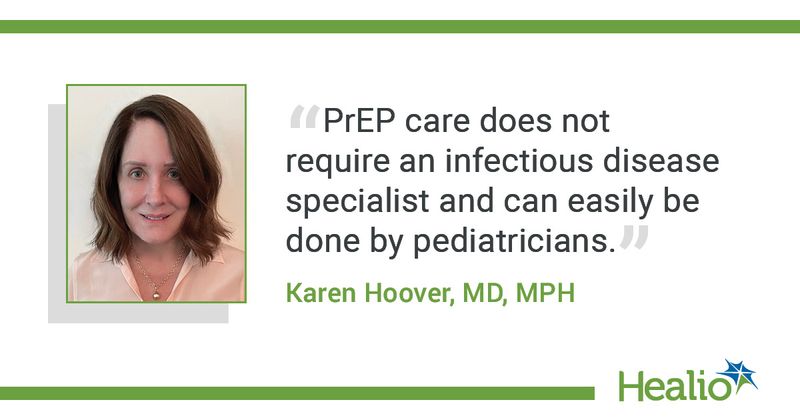HIV PrEP use among adolescents increases more than 75%
Key takeaways:
- Adolescent prescriptions for HIV PrEP increased overall from 2018 to 2021.
- There was a decrease in prescriptions in 2020, likely because of COVID-19.
The number of adolescents with a prescription for HIV prevention medication increased by more than 75% during the first 3-plus years the medicine was available to them, according study findings published in Pediatrics.
In 2018, the FDA approved oral pre-exposure prophylaxis for adolescents weighing at least 77 pounds who are at risk for HIV infection. Adolescents were also included when the FDA approved an injectable form of HIV PrEP in 2021 that can be administered every 2 months.

Data published earlier this year showed that a 12% overall decrease in new HIV infections in the U.S. from 2017 to 2021 was driven, in large part, by a more than 34% decrease in infections among 13- to 24-year-olds.
Still, adolescents and young adults account for around 20% of new HIV diagnoses in the United States, according to Karen Hoover, MD, MPH, prevention research team lead in the CDC’s Division of HIV Prevention, and colleagues.
Few studies have assessed the real-world experience of their PrEP use, Hoover said.
“Understanding trends in PrEP prescriptions for adolescents can help guide the development of interventions and activities to increase PrEP use among those who need it most,” Hoover told Healio. “Also, understanding the clinical specialties of providers who have prescribed it for their adolescent patients can identify needs for provider HIV prevention education and support tools.”
Hoover and colleagues examined data from a national pharmacy database and used an algorithm to identify patients with prescriptions for PrEP.
“We then assessed the trends in PrEP use by adolescents over time and the characteristics of adolescents prescribed PrEP, including sex, age, geographical location, and insurance type,” Hoover said. “We also assessed clinical specialties of the providers who prescribed PrEP.”
The researchers found that 6,444 American adolescents between the ages of 13 to 19 years were prescribed PrEP in 2021 — a 76.2% increase from 2018, although they did note that there was a decreases in 2020, likely because of the COVID-19 pandemic. Most of these patients were male (82.6%) and most were aged 18 to 19 years (87.8%).
Among 2,455 physicians who prescribed PrEP, only around 30% were pediatricians, including 217 who prescribed PrEP to patients aged between 13 and 17 years, 67.7% of whom were identified as general pediatricians.
“We were not surprised that most adolescent PrEP users were older, because persons in that age group are more likely to be sexually active than younger adolescents,” Hoover said.
Hoover said they were surprised that most providers who prescribed PrEP to adolescents were not pediatricians.
“This might indicate a missed opportunity for pediatricians who are uniquely poised to counsel their adolescent patients about sexual health, substance use, and HIV prevention,” Hoover said. “PrEP education for providers can prepare pediatricians to conduct a sexual and substance use history and to counsel about and prescribe PrEP for their patients. PrEP care does not require an infectious disease specialist and can easily be done by pediatricians.”
She did acknowledge the challenges for providers when it comes to identifying adolescents who may benefit from PrEP.
“System-level interventions can support these efforts,” Hoover said. “Clinical decision support tools that use information in patient electronic health records — such as STI diagnoses — can identify adolescents with clinical PrEP indications.”
In an accompanying commentary, David C. Griffith, MD, and Allison L. Agwu, MD, ScM, both from the Johns Hopkins University School of Medicine, said the study show that “efforts to increase PrEP uptake among adolescents are taking root.”
“However, there are ... opportunities to improve data collection to inform the design and implementation of initiatives to further increase uptake,” they wrote. “These lessons learned will be critical as other modalities (eg, long-acting injectable PrEP), which can minimize delays in uptake and optimization, become available for HIV prevention in youth.”
References:
Griffith D, et al. Pediatrics. 2023;doi:10.1542/peds.2023-063238.
Hoover KW, et al. Pediatrics. 2023;doi:10.1542/peds.2023-062599.
